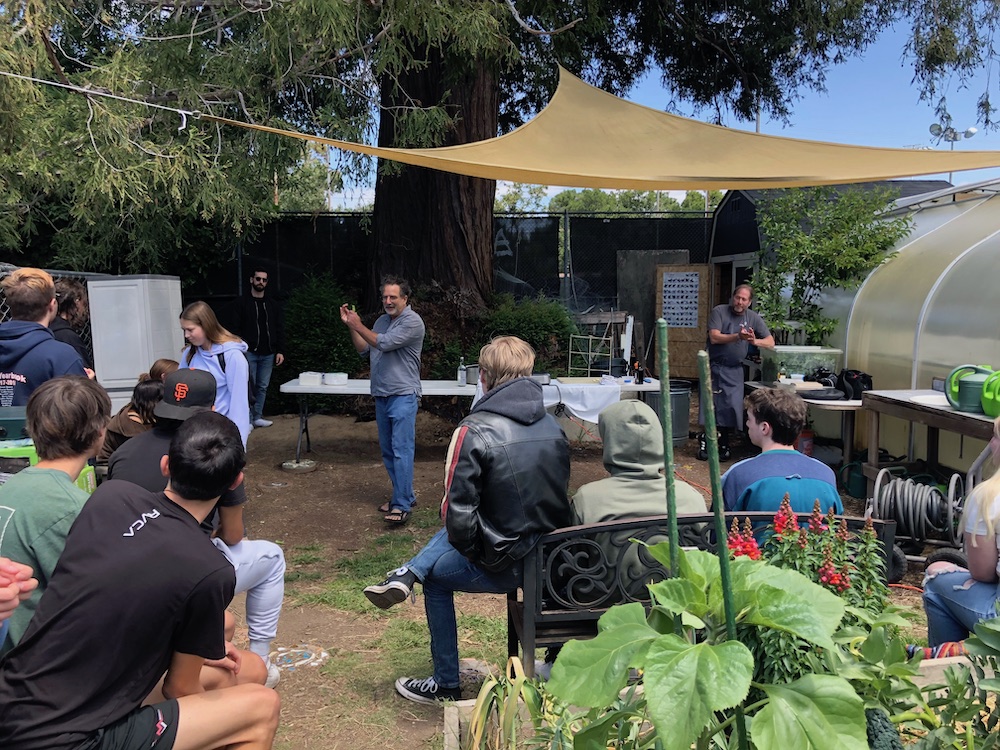
May 31, 2022 – Gardens are more than a source of food. They are ecosystems, battlegrounds, sanctuaries, party places and windows into our souls. Sometimes, they are nature’s most effective classrooms. For Santa Cruz resident Philip Rosenblum, who teaches biology and chemistry to high school students in Los Gatos, a garden on the school campus represents the most meaningful biology experiment he could imagine.
Rosenblum, a class of 1992 UC Santa Cruz biology major, began teaching in the Watsonville school system, before taking a job at Los Gatos High School in 2006. His world got a lot more interesting when he began teaching an AgroEcology class 7 years ago. For lab credit, students tend their own garden plot on the campus, selecting the flowers and vegetables to raise.
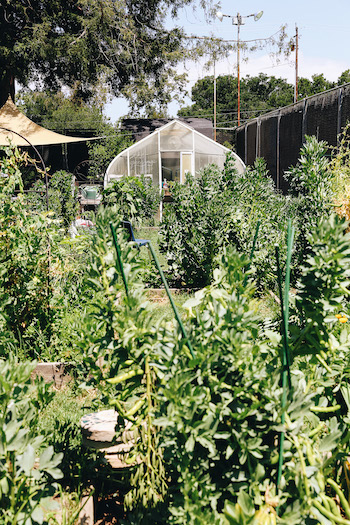
The garden, a beautifully lush oasis sandwiched in between parking lots, a redwood grove and tennis courts, has been part of the high school grounds since the 1920s, initially as part of 4H and then as part of the science department. What better way to connect iPhone addicted kids who spend the better part of their lives glued to the digiverse, than to introduce them to terra firma and get their hands dirty growing stuff?
Explains Rosenblum, “Each student gets a 5×10’ plot in which they plant flowers and vegetables. They come in two to three days a week, as part of the class. They can come after school as well. About a third of the students come in after hours.”
He admits it’s gratifying to see students that have little interest in academics connecting to the reality of a garden, with its delights, disasters and constant pressure from predators.
“They get to experience the lifecycle of plants, from seeds to seedlings to harvest, and understand what is involved in growing food and keeping plants alive. A lot of the kids aren’t used to eating vegetables. About half of the class is taking home food to share with their families.”
This year, the garden took on new significance for the students, the teachers and the community. It started with the early days of the pandemic in 2020, when my neighbor, Martha Delaney, one of those people with an innate green thumb and a love of all creatures great and small, brought me a huge bag of fava beans from the garden, after the school had shutdown in person classes. Students or no students, she still had a garden to tend. I asked Manresa’s Michelin 3 star chef David Kinch, who was in the process of getting Mentone open at the time, if he wanted some. He was delighted. And thus laid the groundwork for a collaboration between Manresa and the high school. As part of the restaurant’s ongoing and intensifying sustainability efforts, chef Kinch is taking in some of the produce grown at the garden, in exchange for compost created from food and vegetable scraps at the restaurant. He also donates to the student scholarship fund at the high school.
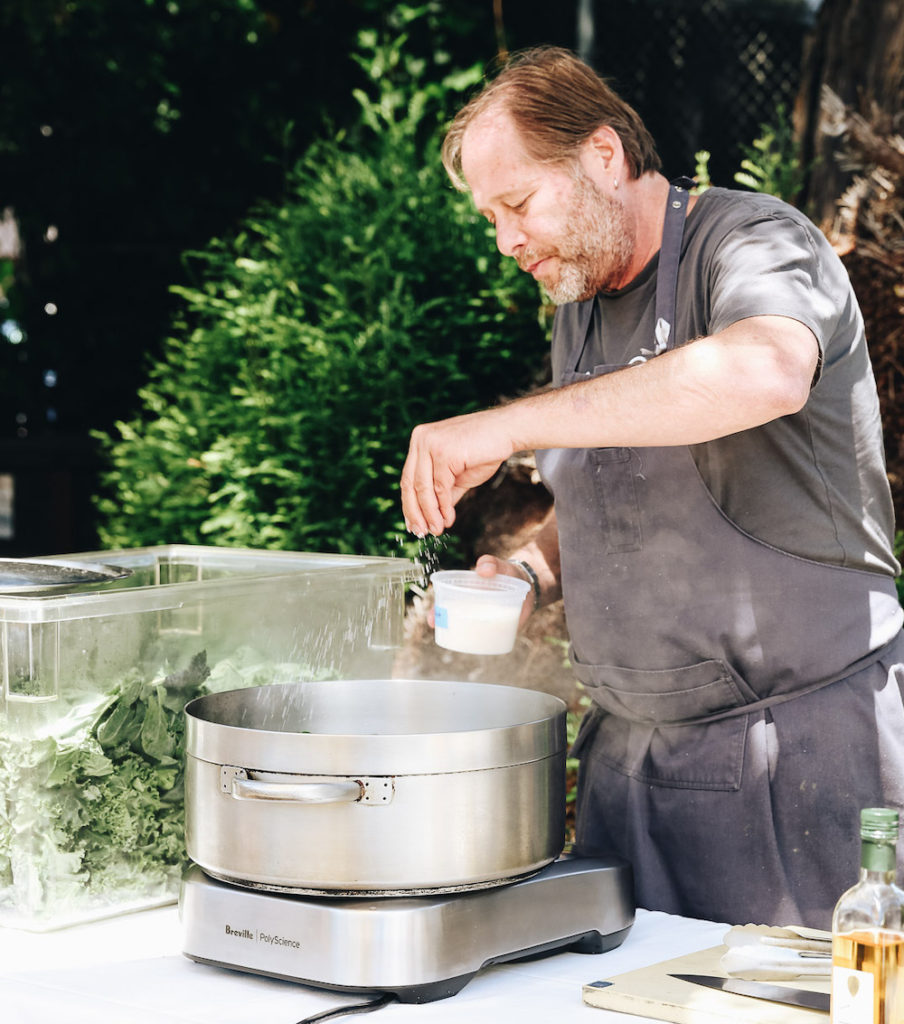
Turns out he’s particularly fond of the fava beans grown by the students and created a special dish around them that is currently featured on the menu at Manresa. I met him in the garden earlier this month, where he was getting ready to prepare a meal for the students made from braised greens. He intended to impart several important lessons, including the importance of resource conservation, eliminating or reducing single use plastic and being water smart.
“Two of the most water intensive operations are restaurants and wineries,” Kinch told the students. “It’s because we need to keep surfaces clean throughout the food preparation process,” he explained.
So important is sustainability, that Kinch appointed Boris Cherny to be sustainability coordinator for Manresa. He’s got an enormous job, but he seems determined to tackle it.
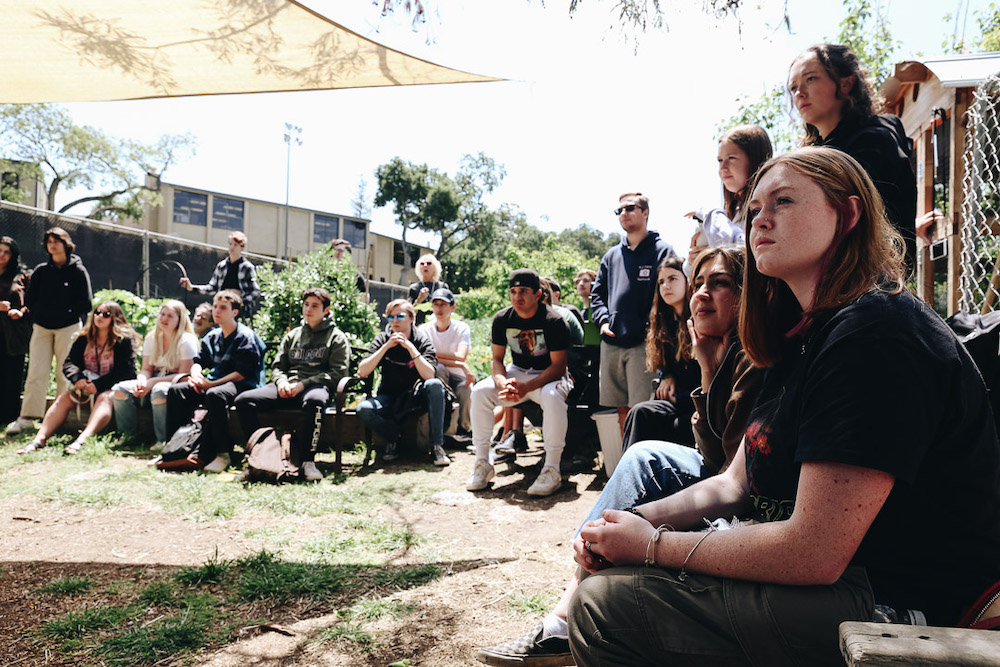
In addition to teaching the critical importance of water, gardens are also a lesson in the importance of weeding, patience and paying attention. As I walked around, Rosenblum pointed out the different crops. As he did so, he made a startling admission. When he took the job, he had basically no gardening experience at all. He’s had to come up to speed. Learning is the best part of teaching.
Most of the plots sported a combination of flowers—snapdragons were especially popular—along with vegetables like kale, lettuce, snap peas and baby tomato plants. Some had little tents over once small plants that were now pushing those tents up up and away. One student had planted pole beans that were looking about read to pick. It was obvious that salads were not top of mind among the plot tenders. Some of the lettuces were gorgeous: a few getting ready to bolt.
The more adventurous gardeners in the group were growing radishes, potatoes and pole beans. Some young farmers were obviously more connected to the concept of turning dirt, seeds, sunlight and water into something nourishing and delicious than others.
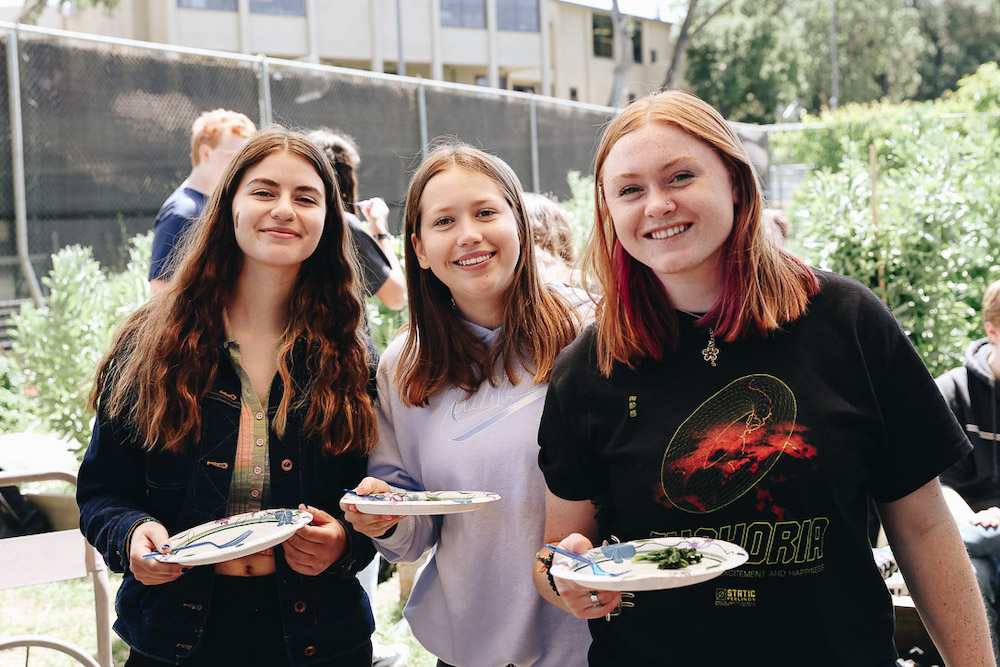
“I encourage each student to install their own drip irrigation system,” Rosenblum shared. “It gives the students something to do and to learn. They learn to plant, weed, water and harvest. This is the best science class I can ever imagine. It’s a constant experiment.”
“I give extra credit for carrots and potatoes, as they are harder to grow. Since working with Manresa, they are motivated to plant what the restaurant can use. Some kids had never seen a radish before!”
You reap what you sow. The other lesson gardens teach us all.
About the author
Laura Ness is a longtime wine journalist, columnist and judge who contributes regularly to Edible Monterey Bay, Spirited, WineOh.Tv, Los Gatos Magazine and Wine Industry Network, and a variety of consumer publications. Her passion is telling stories about the intriguing characters who inhabit the fascinating world of wine and food.
- Laura Nesshttps://www.ediblemontereybay.com/author/lness/
- Laura Nesshttps://www.ediblemontereybay.com/author/lness/
- Laura Nesshttps://www.ediblemontereybay.com/author/lness/
- Laura Nesshttps://www.ediblemontereybay.com/author/lness/


